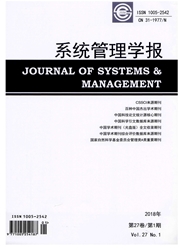

 中文摘要:
中文摘要:
快速有效的应急管理是减少极端洪灾损失的唯一途径。为此,发现极端洪灾应急管理流程中的延时环节成为首要任务。根据极端洪灾应急管理的阶段性特征,利用随机Petri网进行流程建模,收集整理2007年淮河流域极端洪灾应急管理流程的数据,用同构马尔可夫链仿真和时间性能分析。从指标库所繁忙概率、变迁利用率、平均延迟时间的计算结果得出结论:灾后重建阶段占用时间最多,应急响应阶段中的蓄滞洪区启用过程占用时间其次,考虑时效性要求,后者是日后流程优化的重点,为提高极端洪灾应急管理的效率提供理论上的依据。
 英文摘要:
英文摘要:
Rapid and effective emergence management is the only way to reduce flood losses. Therefore, analyzing the time performance of extreme flood disasters is of great significance to raise efficiency in emergency management. Based on a whole extreme flood disasters emergency management process from disaster forecasting and alarm, emergence response to post-disaster reconstruction, we establish a stochastic petri net (SPN) model of extreme flood disasters emergency management process. We then develop an isomorphic Markov Chain model for measuring and evaluating the time performance of extreme flood disasters emergency management process using data in the Huaihe river basin in 2007. The simulation results show that post-disaster reconstruction is most time-consuming and the next is emergency response. Considering the timeliness requirements, the latter will be the focus of process optimization in the future research.
 同期刊论文项目
同期刊论文项目
 同项目期刊论文
同项目期刊论文
 Asymmetric Nash bargaining model for the eastern route of south-to-north water diversion supply chai
Asymmetric Nash bargaining model for the eastern route of south-to-north water diversion supply chai Research on Flood Risk Zoning Based on Information Diffusion and Entropy Theory in the HuaiheRiver B
Research on Flood Risk Zoning Based on Information Diffusion and Entropy Theory in the HuaiheRiver B Modeling and Simulation on Co-evolution of Emergency Agents for Unconventional Emergency Water Disas
Modeling and Simulation on Co-evolution of Emergency Agents for Unconventional Emergency Water Disas Linguistic power aggregation operators and their application to multiple attribute group decision ma
Linguistic power aggregation operators and their application to multiple attribute group decision ma A METHOD BASED ON MEAN DEVIATION FOR WEIGHT DETERMINATION FROM FUZZY PREFERENCE RELATIONS AND MULTIP
A METHOD BASED ON MEAN DEVIATION FOR WEIGHT DETERMINATION FROM FUZZY PREFERENCE RELATIONS AND MULTIP 期刊信息
期刊信息
